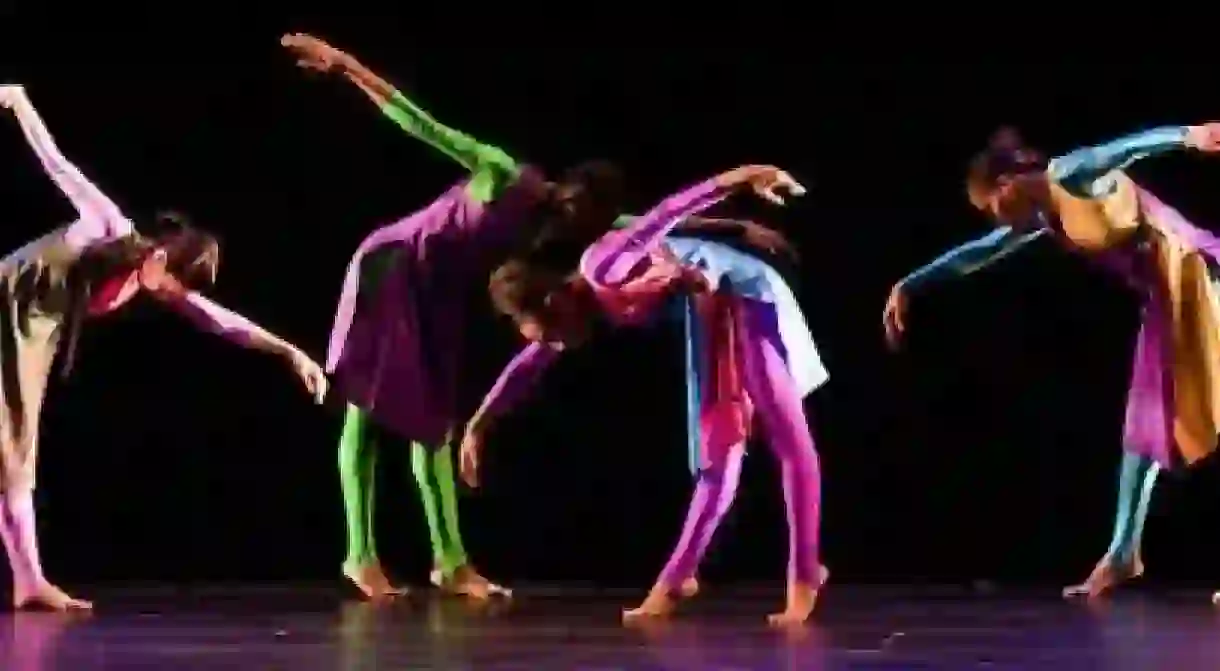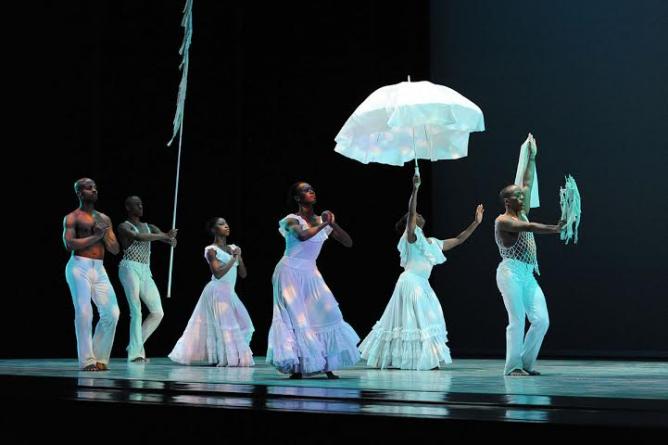10 Iconic Dancers from the United States: Beauty in Motion

American dance has come to mean a plethora of different things to different people. With such a broad span of styles and influences, it’s almost impossible to pick out just ten individuals who had the greatest influence on dance as a whole. It is certainly possible however, to recognize dancers across several decades and disciplines who left – and in some cases, are still in the process of forging – their unique mark on dance.

Alvin Ailey
Ailey mixes the avant-garde quality of Martha Graham with the social activism of Brenda Dixon Gottschild – if Graham created modern dance, he popularized it. Ailey may not have approached a career in dance so enthusiastically as some of the others on this list, but as soon as he began to dabble in choreography, his place became clear. Instead of attempting to limit his dancers to a particular style, he allowed them to use whichever styles best fit their particular talent sets. He also combined the more classical styles with African American forms of dance, which truly changed the discipline as a whole. Ailey died in 1989, an unfortunate casualty of the AIDS epidemic. You can watch “Revelations,” a piece created by Ailey, here.

Bill Evans
Evans ventured into many different styles during his time as a performance artist, including ballet, modern and tap. His greatest legacy however, will almost certainly lie in the technique of modern dance that he created, which emphasizes the total integration of mind and body. Evans took his study of movement even further than most dancers by becoming certified in Laban Movement Analysis, which takes elements from such diverse fields as anatomy and psychology in order to describe, document and visualize movement. The Bill Evans Dance Company, which he founded in 1974 and still heads, actively puts these techniques into use in its many performances.
Brenda Dixon Gottschild
Gottschild began her career as a dancer, but the more important elements of her career stem from her ability to use dance and her body as a way of discussing social problems. While she originally studied dance and travelled around America and Europe as a performer, she eventually returned to school in order to earn her Ph.D in performance studies, which she achieved in 1981. She now writes academic texts and gives lectures, which often include the use of her body as an instrument of instruction. She endeavours to use the pieces she choreographs to make people think about issues like racism (Gottschild herself is African American) and gender inequality.
Daniel Ezralow
Ezralow, who began his professional career in 1976, has danced with some of the most exciting troupes in modern dance, like ISO Dance, MOMIX and Pilobolus. He also has his own Daniel Ezralow Dance Company. The words reviewers use to describe his works range from ‘galumphing’ to ‘manic’ to ‘tormented’ – a true testament to his versatility. His career has also taken him into choreography, in which role he has done quite a bit of recognizable work. For example, he was a primary choreographer for the Opening Ceremonies of the 2014 Winter Olympic Games in Sochi.

Edward Villella
Villella deeply explored ballet more than any American male ballet dancer had done before him. He had the honour of being the first American dancer to receive invites to dance with the Royal Danish Ballet and no other American ever danced an encore at the celebrated Bolshoi theatre in Russia. Several American presidents, including John F. Kennedy and Lyndon B. Johnson, personally enjoyed his work and he won an Emmy Award for his television performance of Harlequinade. You can watch his 1973 performance of “Le Corsaire” at the Sydney Opera House here.

Martha Clarke
Like Ailey, Clarke really found her stride in choreography, but only after a short yet notable career as a dancer. She was a founding member of the Pilobolus Dance Theatre (of which Daniel Ezralow was also once a member), perhaps best known for their acrobatic tableaus and athleticism. This was only an early stage of a career that would not limit itself to dance, but would instead connect several forms of art, most markedly the visual arts but also theatre and opera. Clarke’s works, instead of telling a story, mostly take the form of so-called ‘moving paintings’. Among other things, Clarke has also worked extensively with the American Dance Festival, which is held every summer in Durham, North Carolina, and received a MacArthur ‘genius grant’.
Martha Graham
There are few dancers in the world who are as iconic and influential as Martha Graham. Without her, the discipline of modern dance simply would not exist as we know it today. In her career as a dancer and choreographer that spanned over 50 years, she danced in countless productions, founded the Martha Graham Center of Contemporary Dance and was named Time Magazine’s ‘Dancer of the Century’ in 1998. Her style brought audiences something completely new. For example, her 1936 piece entitled ‘Chronicle’, addressed the most serious issues of the time – such as the Great Depression and the Spanish Civil War – through the medium of modern dance. Graham died in 1991 at the age of 96, but her legacy will endure in the world of contemporary dance for years to come. You can watch a piece choreographed by Graham here.

The Nicholas Brothers
Fayard and Harold Nicholas started out imitating the vaudeville acts of the 1920s and 1930s, but eventually rose to surpass them all with their complete mastery of flash dancing. This style, which became very popular very quickly, combined tap dance, ballet and acrobatics to make exciting and athletic performances. Their talent in flash dancing propelled them to a career in Hollywood, on Broadway, on television and touring across much of the world. The African American Nicholas Brothers, who began their careers at a time when America was still segregated, also played a role in increasing the acceptance of black performers. You can watch a dance sequence by the Nicholas Brothers here.

Savion Glover
When he started tap dancing as a child, it quickly became clear that Glover was a true dancing prodigy. He began appearing in plays at a very young age and he was even nominated for a Tony award for his performance in ‘Black and Blue’ at the age of 15. Since then, he has gone on to revolutionize tap dancing, although somewhat paradoxically by trying to bring it back to its roots. As he learned from many of the great tap dancers who came before him – Gregory Hines, Honi Coles, and Sammy Davis, Jr., for example – he has always made an effort to bring the styles and techniques from the past into present with his work. As a choreographer, he also created a Tony-nominated show in ‘Bring in ‘Da noise, Bring in ‘Da Funk’. At only 41, Glover will surely be present in the tap dancing scene for years to come.
Suzanne Farrell
Farrell, known as the greatest American lyric ballerina, performed at the highest level of ballet in the US until she was over 40, an exceptionally long career for a ballerina. She began studying with the influential Soviet dancer and choreographer George Balanchine in 1960 and from there, she joined the New York City Ballet in 1961. Balanchine would go on to choreograph work after work for Farrell, which truly allowed her to shine. In recognition of her work, she was awarded the National Medal of the Arts in 2003.














